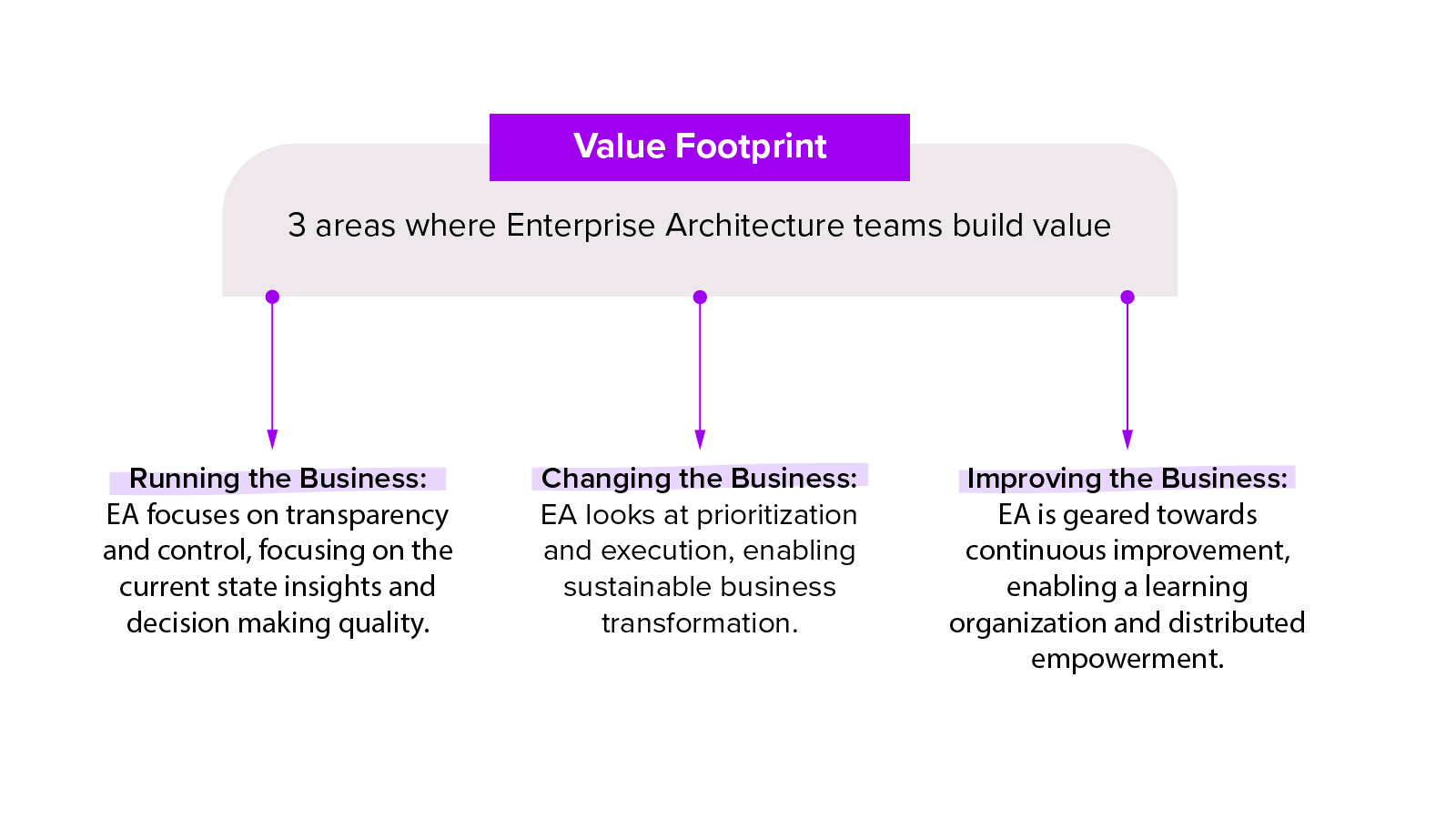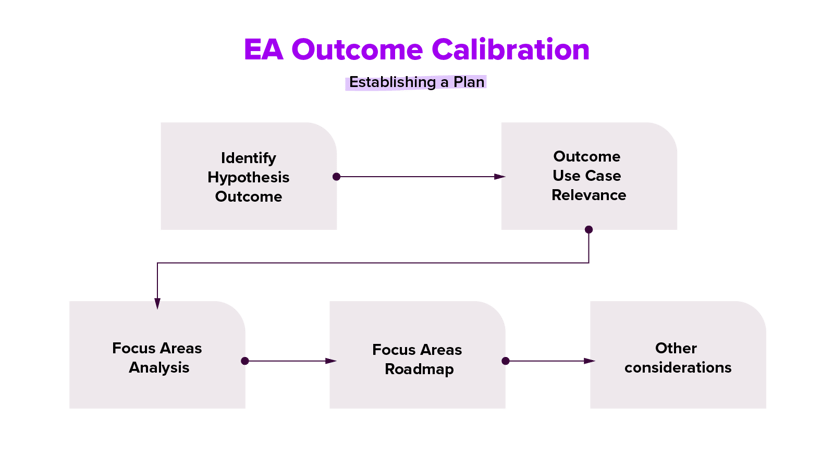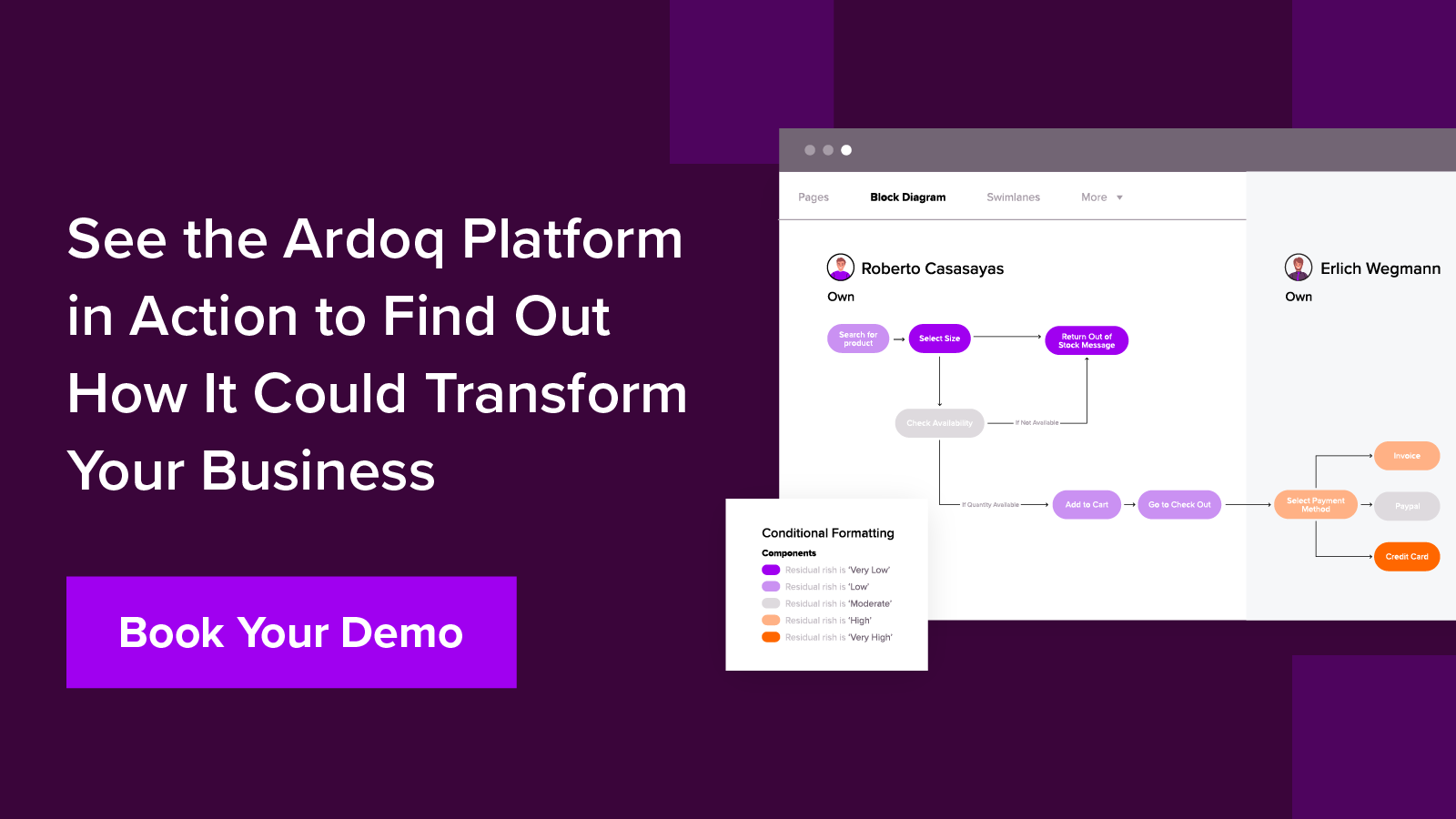There is no fixed template or recipe for success, in business and in Enterprise Architecture (EA). Every organization has unique needs and challenges, which is why we see success as a collaborative process. We work closely with EA teams to develop a 5-step program tailored to their objectives and vision.
Many of the EA teams we work with struggle to communicate their value to stakeholders and the company in general. We listened to their problems and created a structured approach called the Evaluate Workshop.
“We call it the lightweight pragmatic approach, with everything conducted in under 2 weeks or 10 working days. The length allows time for the necessary research and avoids analysis paralysis. The workshops provide an initial understanding of how to build that value roadmap and evolve it over time.”
- Klas Sjödahl, Senior Enterprise Architect at Ardoq
During this workshop, we work with EA teams to connect the dots, noting where they can achieve more value and communicate the value they bring to their organization. Upon completion, the company emerges with a shared value roadmap tailored to its unique needs. They have a clear plan according to their timeline and priorities, with clear steps and key value outcomes. This approach helps them build a business case that defines their objectives, vision, and value.
Creating an Effective Value Roadmap, Step by Step
There are 5 steps in building a shared value roadmap that helps our customers maximize value creation:
- Understand and identify key issues
- Explore the issues
- Analyze and establish a viable plan
- Verify the right solution
- Activate and implement

Step 1: Understand and Identify Key Issues
We start with research, getting to know the complexity of the company and EA team's situation, and gaining a deep understanding of their needs. Through questionnaires, we harvest data and analyze the results to build our knowledge.
In addition, we review the discussions we’ve had with the EA team and the public information on their organization, keeping in mind the challenges present in their specific industry. We do our best to put ourselves in their shoes and get a real feel for how their business works before giving them advice.
With this understanding, we examine and define the stakeholders the EA team should work with to reach their goals. By knowing which views and insights engage certain stakeholders, they can best show value.
“Instead of thinking ‘I should produce the views I find helpful,’ turn the question around and ask, ‘What are your key stakeholders looking for, and how can you provide it, using the smallest possible data set?’” - Klas Sjödahl
One thing we keep in mind: avoid aiming to be complete because it creates ongoing lifecycle management activities to maintain a repository. A minimal data set makes the lifecycle easier to maintain and enables our customers to produce the same value with less data.
Step 2: Explore the Issues
Next, we open discussions with the company to verify our findings. We ensure we’ve understood their challenges and objectives correctly by developing a set of hypothetical outcomes for them to see several possible future states.
By using sets of questions, we build a very clear view of the company’s situation, top objectives, and what they are trying to achieve within that organization. The answers help us develop the value footprint the EA team currently has within the organization.
Knowing the areas where they are adding value builds a shared understanding of the existing footprint so the value roadmap starts at the right place and addresses the key success factors. 
Step 3: Analyze and Establish a Viable Plan
At the halfway point, we are creating tangible results by connecting the thorough research from the first 2 steps. In our experience, sometimes Enterprise Architects have difficulties directly answering important questions, such as ‘What is your planned outcome or objective,’ especially if they are relegated to supporting roles. With careful listening and asking the right questions, we build a plan based on the company’s context, projects, and their pains.
“We are building their transformation roadmap by defining their current location, showing where they want to be, and outlining the steps they need to take to reach the end goal with a realistic and tangible plan.”
- Klas Sjödahl
We run our EA Outcome Calibration based on this information. We proactively create hypothetical outcomes and ask, ‘Does that make sense?’ Their answers help refine each iteration of the hypothesis until it’s a tangible outcome. Then, we can start articulating how to move forward, analyzing focus areas, and creating the roadmap with as many iterations as needed.  Ardoq Quick Start provides an easy way to achieve Application Rationalization and Application Lifecycle Management outcomes using clear guidance and easy templates. Reduce IT complexity and deliver IT cost savings in just 30 days. Book a demo now and see how much you can save.
Ardoq Quick Start provides an easy way to achieve Application Rationalization and Application Lifecycle Management outcomes using clear guidance and easy templates. Reduce IT complexity and deliver IT cost savings in just 30 days. Book a demo now and see how much you can save.
Reaping the Benefits of In-Depth Planning
With the outcome clear, we define how Ardoq's offering can best help EA teams generate value and reach their goals.
- Our Solutions provide a best-practice approach on how to solve specific business problems. These guides include pre-built assets to help EAs easily and quickly reach their objectives and deliver tangible value.
- The Ardoq Platform enables automated visualization of the IT landscape. With it, companies can effectively crowdsource data, enrich analysis and quickly create and stimulate future scenarios based on data and marketing leading collaboration.
- Our Professional Services specialists work with companies to ensure successful implementation and adoption of the Ardoq platform. They help EA teams overcome blockers and shorten the time to value.

Step 4: Verify the Right Solution
Now that we have a roadmap, we check that it’s completely aligned with the EA team’s needs and makes logical sense to the company. Then we check that sequence and timeline against the EA team’s reality. For example, there might be sections where they want to move quicker or places where a blockage needs more time scheduled into the plan.
Finally, we identify if they have sufficient expertise and resources to execute the roadmap or if they require additional support from our professional services team. Some companies may also plan to collaborate with an external professional services vendor.
The solution we come to is more than an idealized vision; it’s a viable transformation plan with instructions on how to make it stick. - Klas Sjödahl
Step 5: Activate and Put the Plan into Action
At this point, the plan is made, and the company can begin to proceed with a stepwise approach to expanding Enterprise Architecture value. It’s time to get back to business, using the plan to pursue strategic goals. After all, a tool is only a small part of making Enterprise Architects successful.
A tool like Ardoq can help Enterprise Architects in many areas of their jobs and enable them to unlock more value in their organization. Creating a value roadmap helps them focus on the right things and sets them up for success.
The Benefits of the Evaluate Workshop
Enterprise Architecture teams find the workshop helps them begin with the right mindset for their EA outcomes and aids them in building their success story. In addition, the plan helps our Customer Service Managers (CSMs) offer better support, helping companies expand in Ardoq or move into new relevant areas they might not have considered before.
Our long-term customers use it to build a new roadmap or to re-energize their efforts and find new areas of growth. They appreciate the deep analysis of what they are trying to achieve and where Ardoq can best support them.
With this roadmap, Enterprise Architecture teams or initiatives get a quick start and a shorter time to value. They’ll know exactly which areas to focus on and what they need to be successful. The sequence of steps supports an iterative approach to facilitate constant validation and quality assurance.
Learn how to build EA outcomes that enable timely decision-making and create value for stakeholders across the organization. Get in touch with an Ardoq specialist today.
